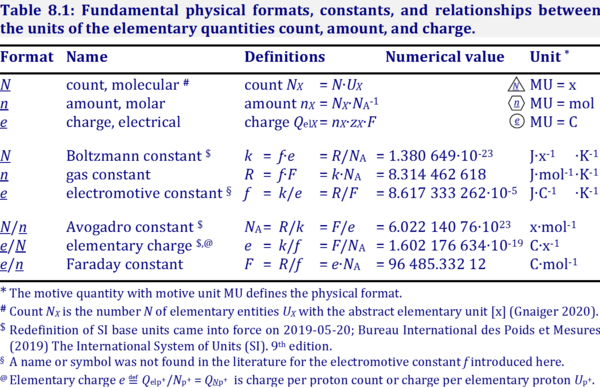Difference between revisions of "Format"
From Bioblast
(Created page with "{{MitoPedia |abbr= |description=right|600px|thumb| Different '''formats''' can be chosen to express physicochemical quantities (motive...") |
|||
| Line 7: | Line 7: | ||
* <u>''e''</u>: electrical format; MU = C | * <u>''e''</u>: electrical format; MU = C | ||
* <u>''m''</u>: mass format; MU = kg | * <u>''m''</u>: mass format; MU = kg | ||
* <u>''V''</u>: volume format; MU = m<sup> | * <u>''V''</u>: volume format; MU = m<sup>3</sup> | ||
* <u>''G''</u>: exergy format; MU = J | * <u>''G''</u>: exergy format; MU = J | ||
* <u>''H''</u>: enthalpy format; MU = J | * <u>''H''</u>: enthalpy format; MU = J | ||
Revision as of 13:34, 20 October 2018
Description
Different formats can be chosen to express physicochemical quantities (motive entities or transformants) in corresponding motive units [MU]. Fundamental formats for electrochemical transformations are:
- N: particle or molecular format; MU = x
- n: chemical or molar format; MU = mol
- e: electrical format; MU = C
- m: mass format; MU = kg
- V: volume format; MU = m3
- G: exergy format; MU = J
- H: enthalpy format; MU = J
- S: entropy format; MU = J·K-1
Communicated by Gnaiger E 2018-10-20
MitoPedia concepts:
Ergodynamics


